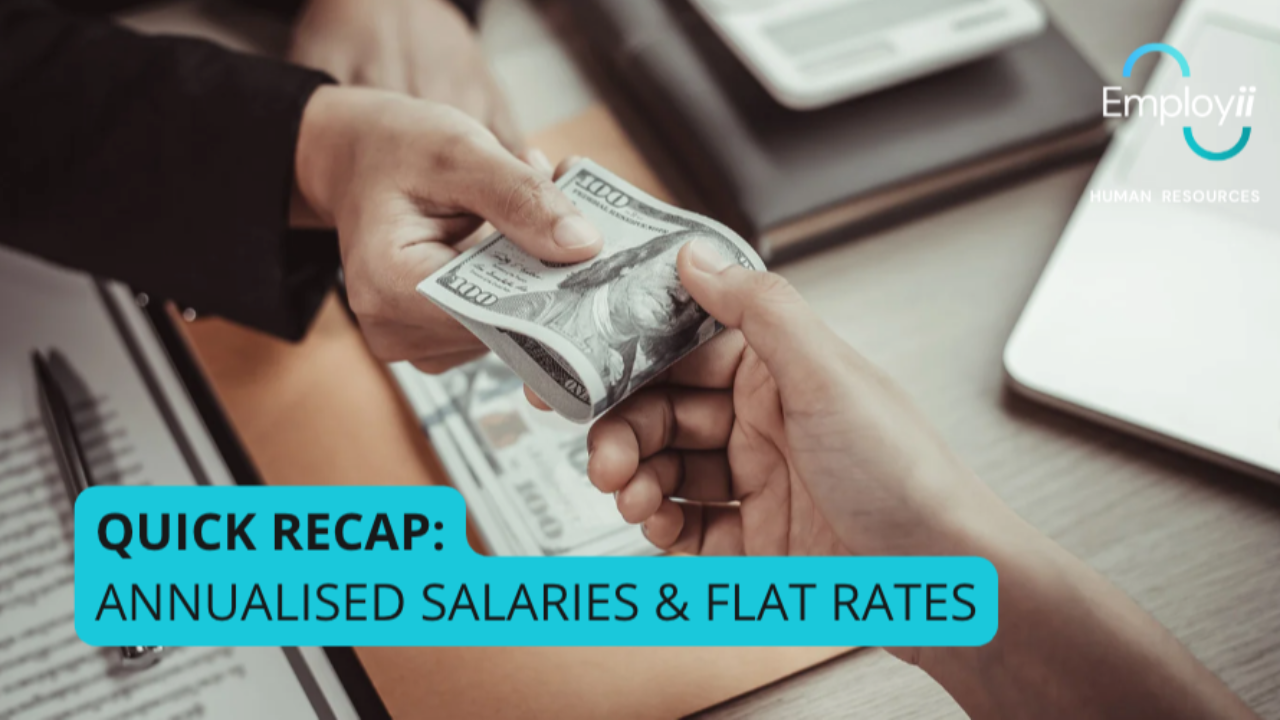
Quick Recap: Annualised Salaries & Flat Rates
Sep 15, 2023Annualised salaries and flat rates require more than just picking a number that seems higher than the Award. It requires a logical assessment and ongoing auditing in order to prevent an underpayment.
What are they?
Annualised salaries are, for example, when an employer pays an employee a total salary across the year (e.g. "$70,000 + Super"). Typically, this amount may often be defined as "all inclusive" in your contract of employment and often covers entitlements such as shift penalties, overtime, allowances, annual leave loading etc.
Flat Rates are when an employer pays an 'above-Award' rate consistently across an employee's roster. This is instead of paying a base rate + applicable penalties (when they apply) + applicable overtime (when they apply) + leave loading + other allowances and amounts (when they apply).
Common Mistakes
Often, Employers think you can just pick a number that is higher than the Award rate, on the assumption it will be high enough to cover what the employee would otherwise be entitled to under the Award... but that's not the case!
You need to do the maths!
You must:
- Compare the employee's roster to the Award and calculate what they would be entitled to
- Calculate what you would offer them under your higher rate
- Define the "buffer" between these numbers
- See if that buffer is really high enough...
- Define the limitations (aka, it only covers them for afternoon shift penalties, but it does not cover them for overtime.... or, it only covers them for 2x hours of overtime per week...)
We strongly recommend getting the Employii to review any flat rates and/or annualised salaries you have to ensure you're above board.
Extra notes:
- When comparing over/underpayments you must compare per pay cycle. This applies to offset clauses too! You can only offset amounts occurring within the same pay cycle.
- Under some Awards, employers may also be required to record to annual wage arrangement in writing and give their employees a copy. This should include the annual wage that will be paid, which Award entitlements are included, how the annual wage has been calculated, and the maximum number of penalty hours (overtime or weekend work) that an employee can work within a roster cycle without receiving extra payment. Refer to your Award for more info.
Tips for employers:
- When calculating an annualised salary and/or flat rate for an employee, there needs to be some method behind the numbers!
- Document this method, document the maths, document the audits
- Employers need to make sure that the rate of pay they're offering really is 'all inclusive' and covers any penalty hours that the employee may be required to work (this includes allowances too!)
- The requirements surrounding annualised salaries vary per Award (this means that if you have employees covered under different awards, there may be various requirements to follow!)
- Don't take a one-size-fits-all all approach. Employers need to consider the actual hours worked by an employee to determine if their annualised salary is high enough
- Audit your flat rates and annualised salaries! This is the easiest way to ensure underpayments don't occur (REMEMBER: Employees have 6 years to make an underpayment claim too!
Applying Award rules is not as easy as simply taking the rates of pay from the pay guide. Awards are full of terms and conditions that can alter when certain rates do and do not apply. We strongly recommend seeking professional HR assistance.
This is where the Employii team can help!
Please reach out to us at [email protected]
For more information please refer to Fair Work, click here.
Author: Chelsea Finlay (HR Officer).

